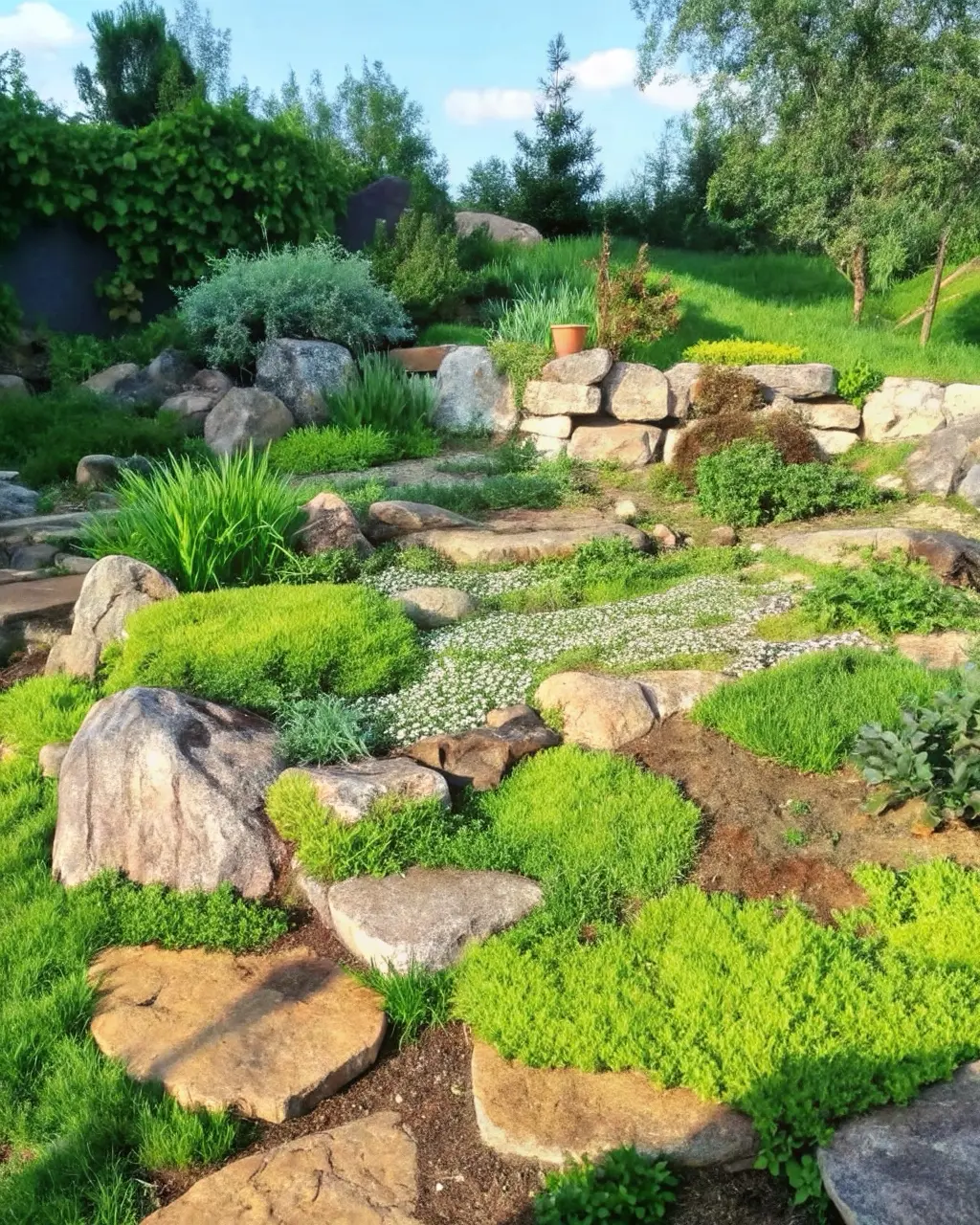Ornamental grasses have revolutionized contemporary landscape design, bringing natural movement, textural interest, and four-season beauty to gardens worldwide. These versatile plants offer unmatched value in landscaping with grasses, providing dynamic elements that change with every breeze while maintaining structural presence throughout the year. Unlike static landscape elements, ornamental grasses create living, breathing gardens that respond to wind, light, and seasonal changes, making them essential components of modern landscape design.
Table of Contents
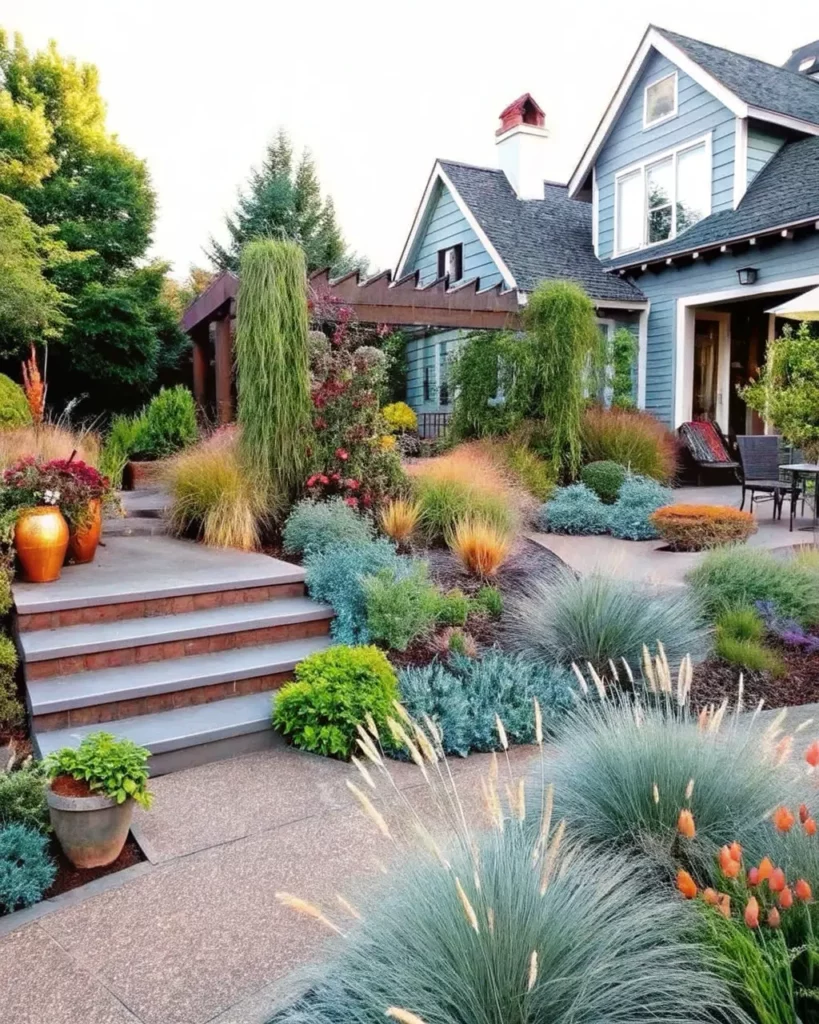
The Modern Renaissance of Ornamental Grasses
The appeal of grasses for year-round appeal extends far beyond their obvious textural contributions. These plants offer unique seasonal progression, from fresh spring emergence through summer flowering, spectacular fall displays, and architectural winter presence. This continuous evolution keeps gardens interesting and engaging throughout all four seasons, providing low-maintenance textures that require minimal intervention once established.
Modern breeding programs have expanded the palette of available ornamental grasses dramatically, offering everything from compact edging plants to dramatic specimen grasses that can serve as focal points in large landscapes. This diversity makes it possible to incorporate grasses into virtually any garden style or size, from formal contemporary designs to naturalistic prairie gardens.
Why Grasses Matter in Modern Landscape Design
The importance of ornamental grasses in contemporary landscaping reflects broader trends toward naturalistic design, sustainability, and low-maintenance gardening. These plants provide essential textural contrast in gardens dominated by broad-leaved perennials and shrubs, creating visual relief and adding sophistication to plant combinations.
The movement created by ornamental grasses adds a dynamic quality that static plants cannot match. This constant motion creates sensory experiences that engage multiple senses, from the visual pleasure of swaying plumes to the gentle rustling sounds that grasses produce in even light breezes. This sensory richness makes gardens more engaging and memorable.
Ecological benefits of ornamental grasses include wildlife habitat provision, soil erosion control, and carbon sequestration. Many grass species provide seeds for birds, while their dense root systems improve soil structure and prevent erosion on slopes and challenging sites. These environmental benefits align with growing interest in sustainable landscaping practices.
The architectural qualities of ornamental grasses make them valuable for creating structure and form in garden design. Tall grasses can serve as living screens or backdrop elements, while compact varieties provide textural accents and edge definition. This versatility makes grasses essential tools for professional and amateur designers alike.
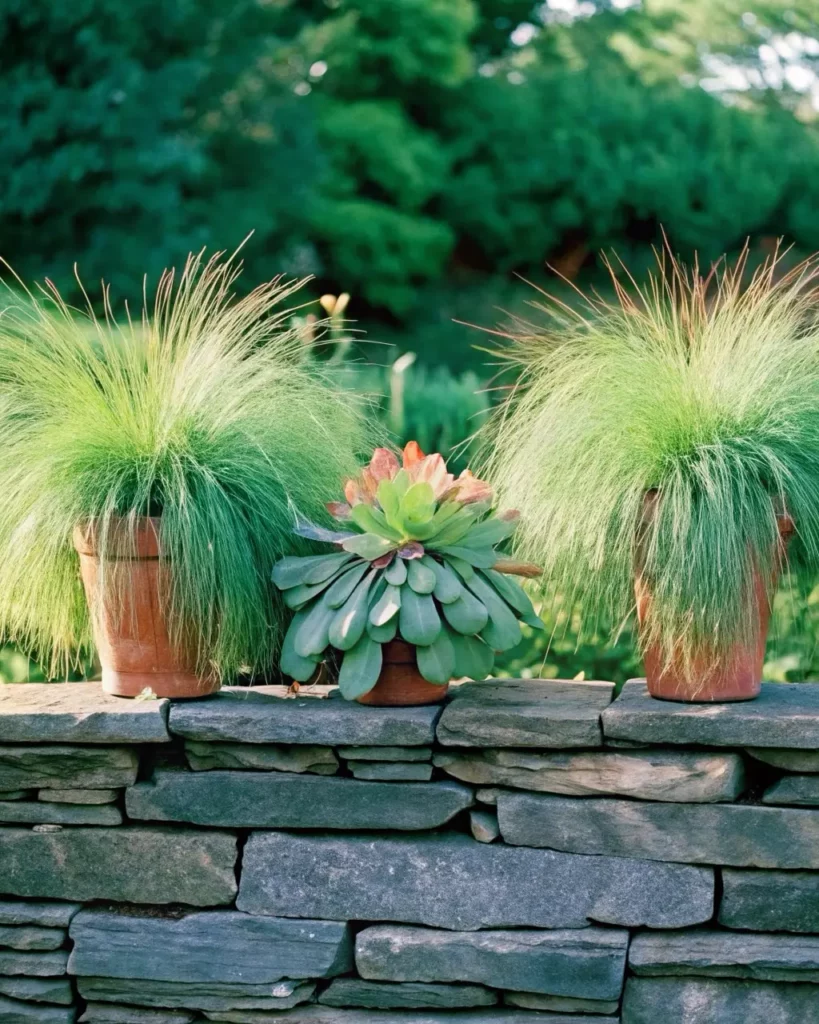
Visual Texture Through All Four Seasons
Understanding the seasonal progression of ornamental grasses helps gardeners maximize their landscape impact throughout the year. Each season brings distinct characteristics that contribute to the grasses’ value as year-round garden elements.
Spring emergence varies significantly among grass species, with cool-season grasses beginning active growth early while warm-season varieties remain dormant until soil temperatures rise. This difference allows for extended seasonal interest when different grass types are combined strategically.
Summer represents peak growing season for most ornamental grasses, when their full textural impact becomes apparent. Foliage reaches maximum height and density, while many species begin producing flower heads and plumes that add additional textural elements to the garden composition.
Fall brings spectacular transformation in many ornamental grasses, with foliage colors ranging from golden yellow to burgundy red. Seed heads and plumes reach their full development, creating some of the most dramatic displays of the growing season. This fall interest often surpasses spring and summer appeal.
Winter reveals the architectural structure of ornamental grasses, with dried foliage and persistent seed heads creating textural interest against snow and bare soil. This winter presence makes grasses particularly valuable for four-season gardens, providing structure when most other plants are dormant.
Top Ornamental Grass Varieties for Four-Season Appeal
Karl Foerster Feather Reed Grass (Calamagrostis x acutiflora ‘Karl Foerster’) stands as one of the most valuable ornamental grasses for four-season interest. This cool-season grass produces narrow, upright growth to 4-5 feet tall, topped by feathery plumes that emerge in early summer and persist through winter. The grass maintains its vertical form even in snow, making it exceptional for winter interest. Karl Foerster is sterile, preventing unwanted self-seeding, and tolerates a wide range of growing conditions from full sun to partial shade.
Little Bluestem (Schizachyrium scoparium) offers outstanding native grass appeal with exceptional fall color and winter interest. This warm-season prairie grass forms dense, upright clumps 2-3 feet tall with fine-textured blue-green foliage that transforms to brilliant orange, red, and purple in fall. The fluffy seed heads catch and hold snow beautifully, providing excellent winter structure. Little Bluestem tolerates drought, poor soil, and extreme temperatures while providing valuable wildlife habitat.
Mexican Feather Grass (Nassella tenuissima) creates ethereal, cloud-like texture with its extremely fine foliage and delicate seed heads. This warm-season grass forms flowing mounds 12-18 inches tall that move gracefully in the slightest breeze. The blonde seed heads create stunning backlighting effects when positioned where they catch morning or evening sun. Mexican Feather Grass provides excellent drought tolerance once established and works well in contemporary and naturalistic designs.
Fountain Grass (Pennisetum alopecuroides) produces distinctive bottlebrush-shaped flower heads that provide spectacular late-season interest. This warm-season grass forms attractive mounds 2-3 feet tall and wide, with arching foliage topped by showy plumes in late summer and fall. The seed heads persist through winter, providing textural interest and bird food. Dwarf varieties like ‘Hameln’ work well in smaller spaces, while larger selections like ‘Moudry’ create dramatic focal points.
Japanese Forest Grass (Hakonechloa macra) offers unique cascading texture perfect for shade gardens and contemporary designs. This cool-season grass produces flowing mounds of bright green or golden foliage that creates waterfall-like effects when planted on slopes or in elevated locations. The golden variety ‘Aureola’ provides bright color in shaded areas where few other plants perform well. Japanese Forest Grass prefers partial to full shade and consistent moisture.
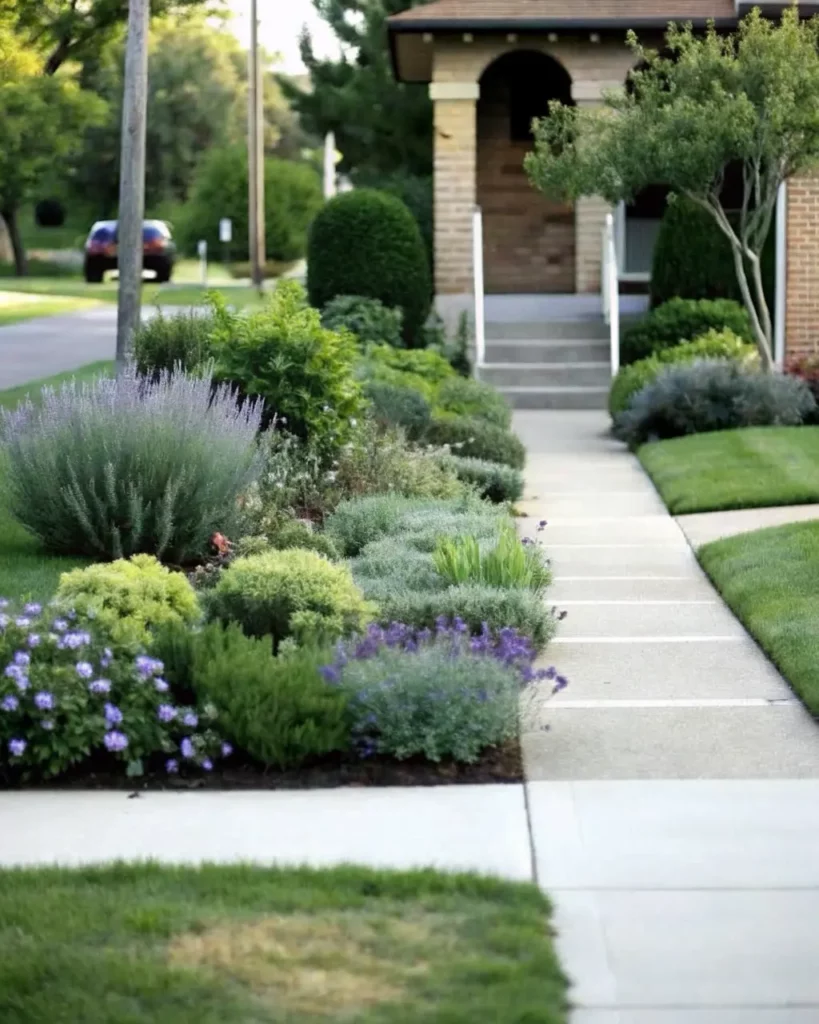
How to Design with Ornamental Grasses
Successful grass design requires understanding how to use their unique characteristics to enhance overall garden composition. Grasses work exceptionally well as transition elements between formal and informal garden areas, providing natural-looking connections that soften hard edges and architectural elements.
Repetition of grass varieties throughout landscape designs creates unity and rhythm while allowing for variation in companion plantings. Using the same grass species in multiple locations ties garden areas together while providing consistent textural elements that unify diverse plant combinations.
Contrast principles apply strongly to grass design, where fine-textured grasses can be paired with bold-leaved perennials for striking visual effects. The vertical lines of upright grasses provide excellent contrast to mounded or spreading plant forms, creating dynamic compositions that hold interest throughout the growing season.
Seasonal succession planning with grasses involves understanding bloom times, foliage color changes, and winter characteristics. Combining early and late-season grasses extends the period of peak interest while ensuring that something is always at its best in grass-focused garden areas.
Mass Planting and Specimen Use
Mass plantings of ornamental grasses create dramatic landscape effects that single plants cannot achieve. Large drifts of the same grass species produce powerful visual impact while requiring minimal maintenance once established. This approach works particularly well for slope stabilization, meadow gardens, and contemporary landscape designs.
Specimen use highlights individual grass plants as focal points or accent elements in garden design. Large, architectural grasses like pampas grass or giant miscanthus can serve as living sculptures, while smaller specimens can provide textural accents in mixed borders or container plantings.
Combining mass and specimen approaches creates layered designs with both unity and focal interest. Background mass plantings provide consistent texture while specimen plants create emphasis and visual hierarchy within the overall composition.
Companion Plant Combinations
Selecting appropriate companion plants enhances the textural impact of ornamental grasses while creating diverse, interesting plant communities. Broad-leaved perennials like hostas, ligularia, and bergenia provide excellent contrast to fine grass textures, creating sophisticated plant combinations.
Flowering perennials that bloom at different times than grass flowering periods extend seasonal interest in grass-focused gardens. Spring bulbs, summer perennials, and fall-blooming plants can be combined with grasses to provide continuous color while highlighting the grasses’ textural contributions.
Shrub companions provide permanent structure around which ornamental grasses can be arranged. Evergreen shrubs offer year-round contrast to deciduous grass foliage, while flowering shrubs add color elements that complement grass textures.
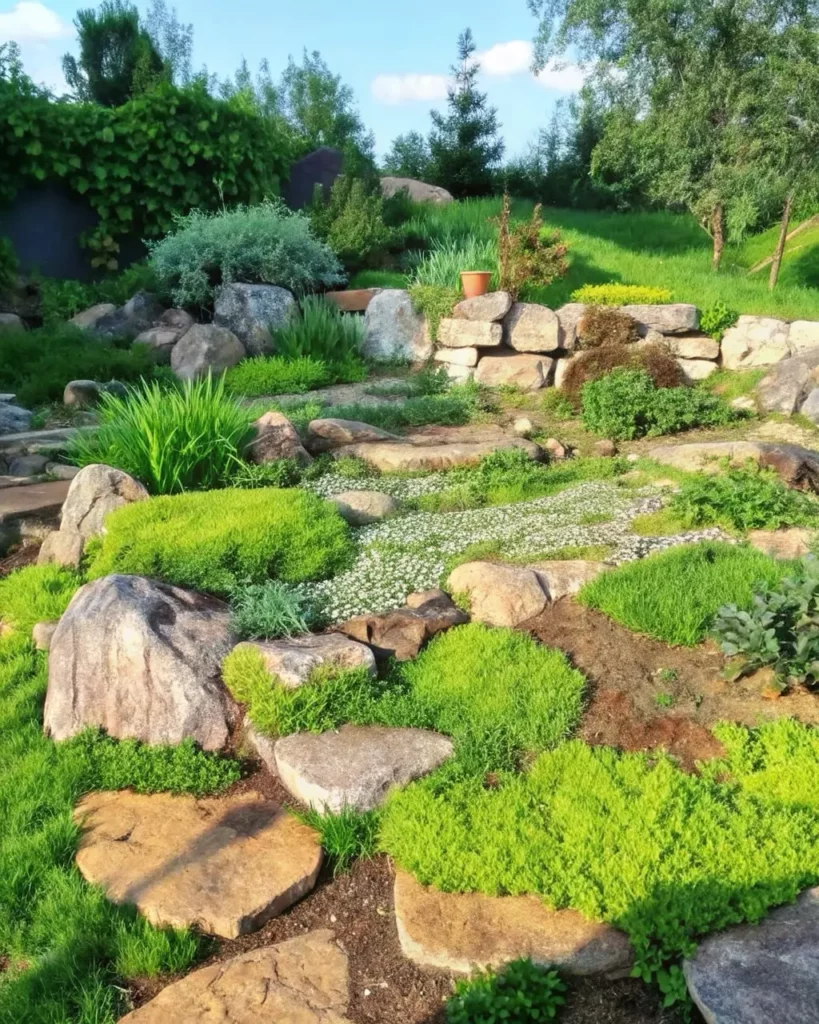
Seasonal Trimming and Care Requirements
Proper maintenance timing is crucial for maximizing ornamental grass performance and appearance. Most ornamental grasses benefit from annual cutting back, but timing varies significantly between cool-season and warm-season species.
Cool-season grasses typically require trimming in late fall or early spring, as they begin growth early in the season. Cutting these grasses too late in spring can damage emerging growth and reduce vigor for the coming season.
Warm-season grasses should be cut back in late winter or early spring before new growth begins. These grasses remain attractive through winter, so delaying cutting preserves their architectural value during the dormant season.
Cutting height and technique affect grass health and appearance. Most grasses should be cut to 4-6 inches above ground level, leaving enough stubble to protect the crown while removing the majority of old growth. Sharp tools prevent stem shredding and reduce disease risk.
Establishment and Long-Term Care
Soil preparation for ornamental grasses varies by species, but most prefer well-draining soil and full sun conditions. While many grasses tolerate poor soil, improving drainage in heavy clay soils prevents root rot and establishment problems.
Watering requirements during establishment are crucial for grass success, even for drought-tolerant species. Consistent moisture during the first growing season encourages strong root development and improves long-term performance.
Fertilization needs for ornamental grasses are typically minimal, as excessive nutrients can cause weak, floppy growth and reduced drought tolerance. A light application of balanced fertilizer in early spring usually provides adequate nutrition for healthy growth.
Division timing varies by grass type but generally follows the same cool-season versus warm-season patterns as cutting back. Dividing grasses every 3-4 years maintains vigor and provides plants for expanding grass gardens or sharing with other gardeners.
Problem Prevention and Solutions
Common issues with ornamental grasses often relate to improper siting or maintenance rather than serious pest or disease problems. Understanding species-specific requirements prevents most problems before they develop.
Flopping or lodging in tall grasses usually results from excessive fertility, inadequate light, or inappropriate variety selection for the site conditions. Choosing compact varieties or providing better growing conditions typically resolves these issues.
Self-seeding can become problematic with some ornamental grasses, particularly in climates where they are not native. Selecting sterile varieties or removing seed heads before they mature prevents unwanted spread while maintaining the grasses’ ornamental value.
Winter damage occasionally affects marginally hardy grasses in severe winters. Providing winter protection or selecting hardier varieties prevents recurring damage and ensures consistent performance.
Creating Year-Round Interest with Grass Gardens
Designing dedicated grass gardens requires understanding how different species complement each other throughout the seasons. Combining grasses with varying heights, textures, and seasonal peaks creates dynamic displays that never become monotonous.
Incorporating non-grass elements like rocks, sculptures, or architectural features provides permanent focal points around which seasonal grass displays can evolve. These elements also provide visual anchors during periods when grasses are cut back or dormant.
Pathways through grass gardens allow close appreciation of textural details and seasonal changes while providing access for maintenance. Curving paths create mystery and discovery opportunities while showcasing different grass combinations from various viewpoints.
Conclusion: Embracing the Dynamic Beauty of Grasses
Ornamental grasses represent one of the most valuable yet underutilized elements in contemporary landscape design. Their unique combination of movement, texture, and four-season interest makes them essential components of modern gardens that emphasize sustainability, beauty, and low maintenance.
The key to successful grass gardening lies in understanding the distinct characteristics of different species and using their unique qualities to enhance overall garden design. By embracing the dynamic nature of ornamental grasses and working with their seasonal patterns, gardeners can create landscapes that are both visually stunning and environmentally responsible, providing year-round beauty with minimal environmental impact.

